You are here
Federal Deficit and Debt: April 2023
Every month the U.S. Treasury releases data on the federal budget, including the current deficit. The following contains budget data for April 2023, which was the seventh month of fiscal year (FY) 2023.
Current Federal Deficit
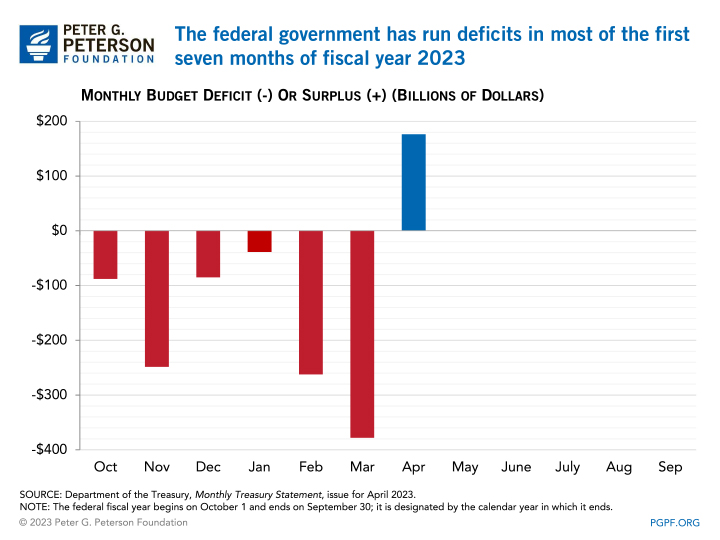
- Federal Budget Deficit for April 2023: $176 billion
- Federal Budget Deficit for April 2022: $308 billion
The federal government ran a surplus of $176 billion in April 2023, a $132 billion decrease from the surplus of $308 billion that was recorded in April 2022. Because April 1, 2023 fell on a weekend, certain payments that would have occurred in April were shifted into March, thereby decreasing outlays. Furthermore, since May 1, 2022 also fell on a weekend, outlays in April 2022 were higher. Excluding the effects of both shifts, the surpluses would have been $373 billion in April 2022 and $101 billion in April 2023, a year over year decline of $272 billion.
Spending was down by $93 billion relative to last year and revenues fell by $225 billion. However, if not for the timing shifts that reduced spending this April and increased spending last April, outlays would have been $46 billion higher than April 2022. The largest increases in spending occurred for the Small Business Administration ($21 billion), and interest on the public debt ($19 billion). Other categories that saw spending grow by more than $10 billion compared with April 2022 are Social Security and the Federal Deposit Insurance Corporation. On the revenue side, individual income taxes, net of refunds, fell by $212 billion, and remittances from the Federal Reserve fell by $10 billion.
Cumulative Federal Deficit
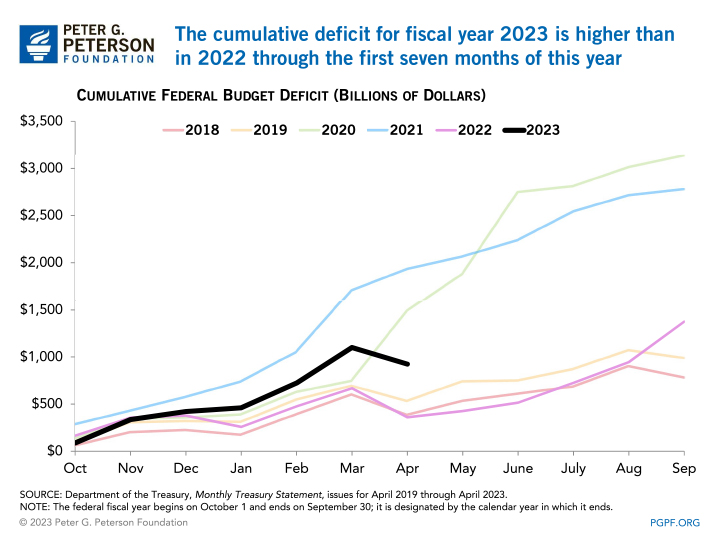
- Cumulative FY23 Deficit: $925 billion
- Cumulative FY22 Deficit: $360 billion
The cumulative deficit so far this year is $565 billion above last year’s level. However, because October 1 fell on a weekend in 2022, certain federal payments were shifted into September, leading to a $63 billion decrease in outlays for this fiscal year. As mentioned previously, April 2022 outlays were also increased by a timing shift ($63 billion). Without those effects, the deficit for FY23 to date would be $691 billion above last year’s total to date.
For the first seven months of FY23, total outlays were $3.6 trillion, $266 billion higher than the same period in the previous year (not accounting for timing shifts). The largest categories of growth in outlays were interest payments ($108 billion higher so far in 2023), a reduction in receipts from the auction of licenses to use the electromagnetic spectrum (which are recorded as offsets to spending and are down by $81 billion), and higher spending for Social Security ($73 billion). Partially offsetting those increases were the expiration of advance payments for the child tax credit (which were recorded as outlays) and a decline in spending by the Public Health and Social Services Emergency Fund.
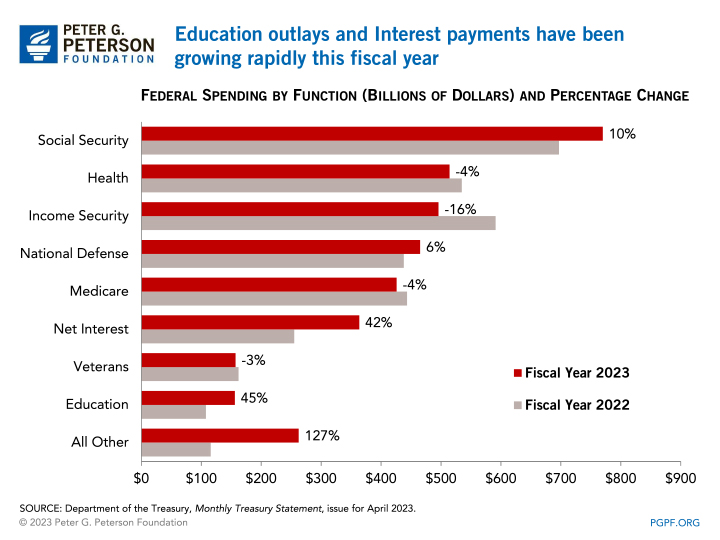
Through the first seven months of FY23, total revenues have decreased by $299 billion compared to the previous year. The largest decreases were in individual income taxes, which fell by about $307 billion, and remittances from the Federal Reserve, which were down by $70 billion. Partially offsetting those effects were a $75 billion increase in payroll taxes and a $5 billion increase in corporate income taxes.
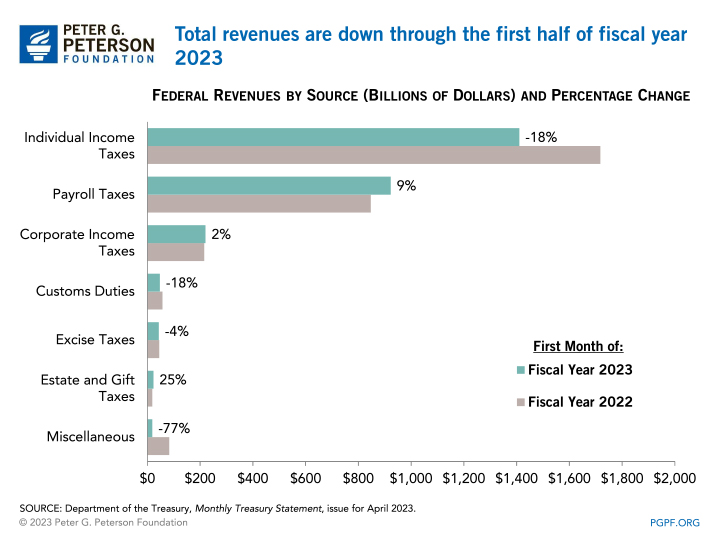
National Debt
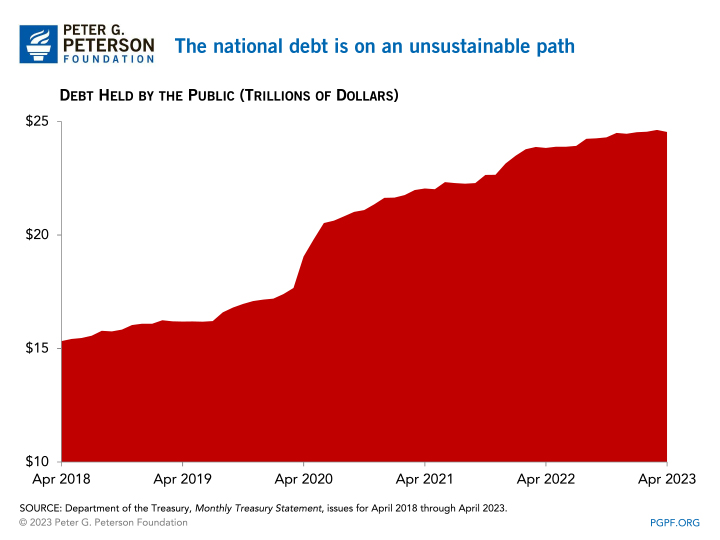
- Debt Held by the Public at the end of April 2023: $24.5 trillion
- Debt Held by the Public at the end of April 2022: $23.8 trillion
Since the financial crisis in 2008, debt held by the public has nearly tripled relative to the size of the economy and is projected to grow even more in the future. Debt and deficits are on an unsustainable upward trajectory. With the new Congress officially in session, legislators are encouraged to work with the Biden Administration to create bipartisan solutions to improve the country’s fiscal outlook.
